This post is part of our Make It Green series, for the Green Crafts Initiative that champions and promotes environmentally sustainable craft practices. In this series by Craft Scotland and Creative Carbon Scotland, you will hear inspiring maker’s stories as well as useful advice on how you can contribute to a greener craft sector.
This series features makers who are working towards a more sustainable practice through innovative techniques and eco-friendly materials. In this interview, you will hear from a maker who is championing the sustainable craft movement here in Scotland through sourcing unconventional eco-friendly materials.
Joanne B Kaar is a research-based visual artist and maker based in Caithness. She has worked and exhibited worldwide - in Taiwan, South Korea, Iceland, USA, Canada, Estonia, Catalonia, and is the recipient of a Museum Galleries Scotland and Creative Scotland Iconic Artists in Iconic Places award. Joanne enjoys finding inventive ways to attract new audiences whilst undertaking extensive research projects to uncover information on little-know artefacts and transforms traditional craft skills into an innovative contemporary practice.
Hello, Joanne. Can you tell us about your process?
My projects are often slow. I enjoy taking time to research techniques and uses of natural materials, encompassing fact, fiction and folklore. More and more I find I’m using what grows on my own field in Caithness as a material for making while documenting the flora and lichens in an archival pressed herbarium collection that will hopefully be around in 100 years+ and perhaps be of some scientific use. I happily get lost in research; I find it equally interesting and as important as making. My projects overlap and are difficult to untangle from each other.
What inspired you to become more sustainable?
It’s been a natural progression. I think it’s down to wanting to keep costs down, being flexible in my choices of materials that are available and continually learning how best to use them by learning from the past and traditional techniques, as well as working with the seasons, while being able to live where I’m inspired.
In the late 80’s, I became interested in making paper by hand while on a one-year exchange at Oregon State University, USA. I liked the tactile nature of the process, and the research exploring different plants to use as well as recycling wastepapers to make new. I continued with recycling wastepaper for many years, mostly because it was accessible: one kitchen blender, a few plastic washing up bowls and my dad made me papermaking mould and deckle from measurements I’d taken while in Oregon. Wastepaper was free and I could work from home in rural Caithness.
This basic set up didn’t hinder creativity as I went on to take part in artist residencies and teach workshops mostly around the Highlands and Islands. My book, Papermaking and Bookbinding, Coastal Inspirations, was published by The Guild Of Master Craftsmen Publishers. As well as writing the text, I took the photos and also made all the artwork illustrated in the step by step projects. I was then invited as artist in residence at the Chaoyang University of Technology in Wufeng District Taiwan, Taichung and the Su-Ho Paper Museum in Taipei, in Taiwan. This five-month residency opened my eyes to how a bit more technology could develop my own artwork much further, but still work from home. The stumbling block was that this technology, a Hollander beater, cost thousands.
A Hollander beater can turn linen rag or cotton jeans into paper pulp. A serious bit of kit, but with an engineer husband, a bit of head scratching, on a windy day using our solid fuel Rayburn as a furnace to cast some of the parts, after a year or so. At a cost of only £40 as all other parts needed, including the motor were in my husbands shed of resources apart from an old plasterers tub purchased from a local gardening shop who no longer used it (for pond plants), I had a Hollander style beater. The first test run was on old pair of jeans – it worked, cotton rag paper. Linen became my fibre of choice and I sourced waste from the Scalpay Weaving shed in the Western Isles.
One of my linen rag paper coats is now in a collection at the Hanju Paper Museum in Wonju, South Korea. I’ve since organised and hosted an international gathering of papermakers from around the world at my home. All members of The International Association of Hand Papermakers and Paper Artists (IAPMA), they came from Sydney, Tasmania, the Yukon Canada, South Korea, Sweden, Denmark, Germany, Netherlands and the UK.
I continue to make paper from wastepaper, old cotton and linen clothes, and plants growing in my field, but it depends if the process suits my ideas or project. I don’t make paper by the sheet to sell.
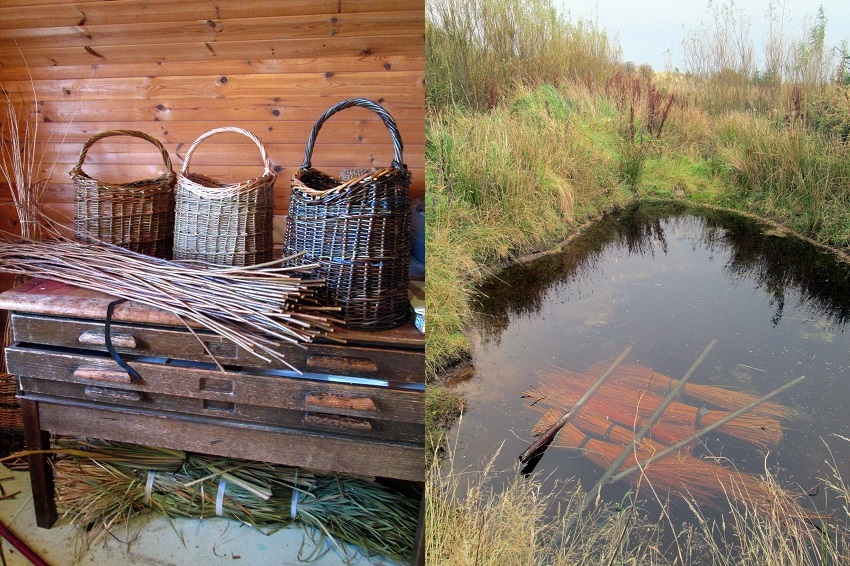 Images: Joanne’s homegrown willow / Images by the artist
Images: Joanne’s homegrown willow / Images by the artist
You are passionate about traditional craft skills and conservation. How do you reinterpret them into a contemporary craft practice?
Crafts are tactile, it connects people with place. Research, material and techniques I use are all important ingredients in the ‘story’ of what I make. Helping to keep stories and memories alive as well as skills by reinterpreting them.
Ideas have been coming together over the past few years about aprons, particularly wrap aprons, the traditional kind I remember my gran and aunts wearing. This traditional women’s workwear garment has a fascinating history, but the garment is no longer in general use. Often women purchased fabric lengths to make their own aprons, the floral prints were traditionally small, making them flattering for all and easy to sew (larger prints would have to be matched up at the seams).
Researching lichens and their traditional uses, revealed that many of the women in old photos were wearing floral wrap aprons while they dyed wool with crottle (lichen). Combining this traditional use with the traditional work garment, I designed a crottle patterned length of fabric and made it into a wrap apron (with some help from my mum!)
Through an open call, members of the public emailed me photos and shared fond memories of mothers, aunts, sisters and grandmothers, all wearing aprons. I’ve made an artist book to bring them all together. I am now custodian of 21 aprons, all once worn by one remarkable local woman. She gave me the collection of tabards, aprons, pinnies, and wrap aprons she once wore but were now washed, ironed and neatly folded in a storage box in her spare room. These aprons need to be seen, they are ordinary but at the same time quite extraordinary. I now have them stored away safely; their time will come.
A hand stitched herbarium. Aprons continued to inspire during lock down 2020. Using an old red bed sheet, I hand stitched in white cotton, a selection of flowers in my pressed herbarium. Incorporating the tapes that hold the flowers in place on the herbarium sheet and their names into my design, the choice of red is no accident, as it also tells a botanical story as Type specimen are easily identified by a red band on folders in herbarium collections. It didn’t escape my notice that these aprons are the original PPE worn by women while doing chores in and around the home.
With local landowners permissions granted, I’m delighted to be able to extend my pressed herbarium collection further to peat bogs and the coast. These pressed herbarium sheets are beautiful objects that tell their own story. They open up a world of botanical travel over time, now stored in museums, botanical gardens and more.
Could you tell us a bit more about what you have learnt on your travels across Europe in terms of sustainable practices?
65° 53' 59.99" N : if I reached out, I could touch the arctic circle.
I was delighted to visit Iceland on two separate occasions. The first was by invitation as instructor, sharing my skills in papermaking and making string from plants with a wool co-operative, Þingborg Ullarvinnsla in Selfoss, south Iceland. A very enthusiastic group of mostly women, who process their local wool from sheep to finished garment. I was there with Archnetwork in the autumn when the sheep were gathered on horseback, and placed in what looked like ancient pens built of black volcanic rocks in the shape of a huge cartwheel. With my interest in nalbinding (an ancient technique using wool, which pre-dates knitting), they arranged not only for me to learn the technique but also visit the only nalbound mit found in Iceland, preserved in a peat bog and now in the National Museum of Iceland. On a day the museum was closed, the curator was able to take the glove out of its case for a closer encounter. It was a fabulous moment.
The second visit was to the far north coast of Iceland, where I had been selected to take part in a hands-on experience, building a traditional turf house. Hosted by Fornverkaskolinn Heritage Craft School (a partnership between the Carpentry Department of the Northwest Iceland Comprehensive College, Skagafjordur Heritage Museum and the Tourism Department at Holar University College), the course re-enforced how important it is to get dirty to really appreciate the skills used in turf house building. Starting with the details of how to find the right kind of turf by looking for specific plants and grasses. Making connections, I had seen these plants in my local museum, in the pressed herbarium sheets of Robert Dick, baker and botanist of Thurso 1811-1866.
Having grown up digging peat for fuel by hand, ideas continue to develop, imagining travellers from afar who passed by, and perhaps lost a mitten in the peat bog. I have, for a few years, been working on a series of hand coverings, made from barked twine (traditional tarred twine use on boats, the tar protects it from the sea salt). The twine is a delicious dark peaty colour, quite stiff, but perfect for nalbinding.
While I was maker in residence for the Crafts Council of Newfoundland and Labrador, mitts and nalbinding came to the fore again. But that’s another story!
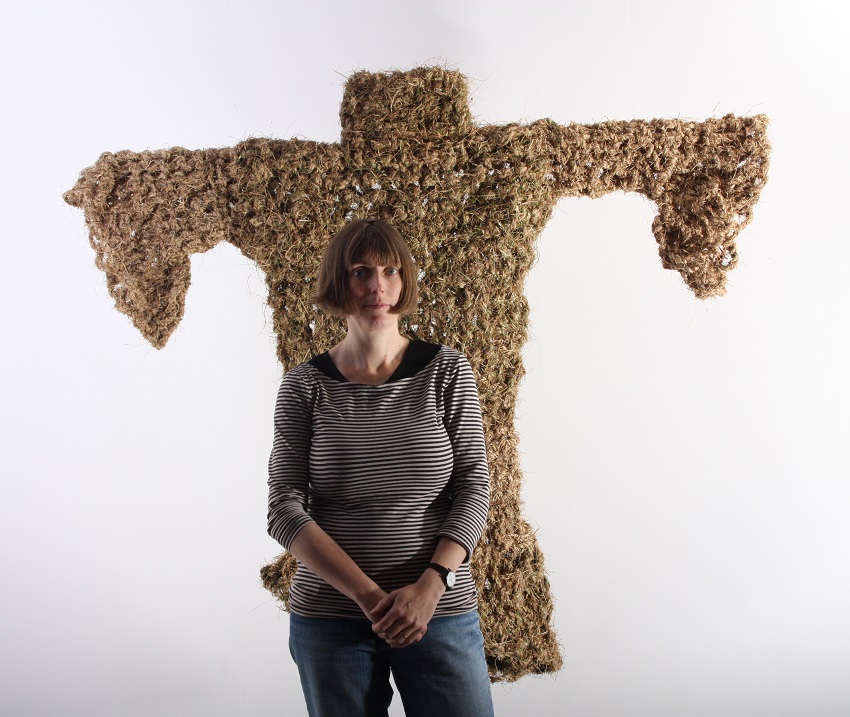 Image: Joanne in front of her Angus MacPhee-repilca garment / Photography by Michael O'Donnell
Image: Joanne in front of her Angus MacPhee-repilca garment / Photography by Michael O'Donnell
You solved the mystery of how Uist crofter Angus MacPhee made his grass garments. Can you tell us more about your research and how you figured it out?
In 2011 Bob Frith, the artistic director of Horse and Bamboo theatre, in Lancashire contacted me as they were planning to develop a play about Angus MacPhee, and they needed costumes and props and wondered if I could help with this. Angus was known as the Weaver of Grass.
I had seen his incredible work while it as on display in Stornoway many years ago. Angus was a crofter. He lived in South Uist, but spent almost 50 years in Craig Dunnain psychiatric hospital in Inverness. He chose not to speak, instead he made garments from grass and leaves growing in the hospital grounds, twisting the plants into a rope or simmans, a traditional technique he would have learnt at home in Uist. When he’d finished making, Angus just discarded them and started another one. It was fortunate that Joyce Laing OBE discovered Angus and saved some of his work.
I made plans to start research and visit Joyce in Pittenweem, Fife, to take a closer look at the grass garments made my Angus. Exactly how Angus made his garments was a mystery Joyce wanted to solve and. So, again, my field of ungrazed grass became a source of material, the perfect material. There are so many different grasses, I don’t know the names of the ones I have growing, but I do know, like Angus is reported to have said to the gardener at Craig Dunnain Hospital, he knows where the good grass is.
The grass weavings made by Angus are now old and fragile. With the help of my husband Joe, who made a sketch of the construction by looking at a patch of more open weave, and the information from Joyce with her first had experience of seeing Angus work, I made notes and took measurements in my sketchbook. Next, with a ball of cotton string, I made a few test pieces. The construction techniques Angus use were not traditional to the UK, in his isolation, with grass, hands and time, Angus ‘invented’ and perfected his methods. The technique he used most was looping.
The looping techniques Angus used are found in many other cultures including those used by Indigenous peoples of Australia. Socks made more than 800 years ago, using the same looping technique have been discovered in a cave in Arizona, made from combed yucca plant, with fragments of feathers to make them more comfortable.
I went on to make grass garments for the Horse and Bamboo theatre, which toured to rave reviews and sell out shows in 2012 and 2013. I have also made full size replica garments including the iconic grass jumper, trousers with pockets and belt and many, many shoes. My replicas are now held in collections with Glasgow Museums as part of the Art Extraordinary collection, along with Angus’s originals; Whitworth Art Gallery, Manchester, in their outsider art collection as part of arts and health; Northampton shoe museum; Craftspace Birmingham’s outsider craft collection.
I have notebooks with diagrams and photos detailing many of Angus’s grass garments, waiting to be made.
I continued to develop and research related techniques which have been found in the UK – nalbinding (knotless netting), a technique once used by Norse cultures, using wool to make a dense fabric for garments including socks, hats and shoes. This predates knitting and is a more complicated series of loops, with many different variations. I combined local plants growing in my own field, with nalbinding to make contemporary artwork.
Can you tell us about any recent research projects you have been working on?
I've been invited to take part in an exhibition curated by Bruno Vinhas, the gallery director of the Craft Council of Newfoundland and Labrador. Sensorius is to open in August 2021 at their gallery in St. Johns, Newfoundland. The exhibition is themed on accessible tactile work.
For the exhibition, I’m upcycling a hand knitted woollen jumper that has provided comfort for nearly 40 years for both my dad and husband. Made to measure for my dad, Michael O’Donnell, this jumper was hand knitted in the late 70's by Camilla Eames knitwear in Kirkwall, Orkney. She had two shops, the first, in the late 1970's was in Victoria St which had a small coal fire at the back of the room. A few years later she moved to open a shop in King St, Kirkwall. It was from the Victoria St shop my dad purchased the jumper (he remembered the coal fireplace).
During the 1980's, my parents Liz and Michael O'Donnell, exhibited their collaborative decorated turned wooden bowls at The Tent, Edinburgh Festivals Craft Fair in Princes St Gardens. Camilla Eames also exhibited at The Tent in the 1980's. I exhibited alongside my parents at The Tent in 1991.
Handed down to my husband a few years ago, it was in need of repair. In 2018, while maker in residence for the Craft Council of Newfoundland and Labrador at The Old Cottage Hospital Museum and community venue in Norris Point, I invited the public to bring me their woollen garments in for repair. I titled my residency project On The Mend. My dad turned me a wooden darning dolly to use during the residency, and to start things off, I brought 2 garments with me to mend – one was this 40-year-old jumper. Now, a few years on, this jumper, still a favourite, but was beyond repair.
Going back in time before going forwards.
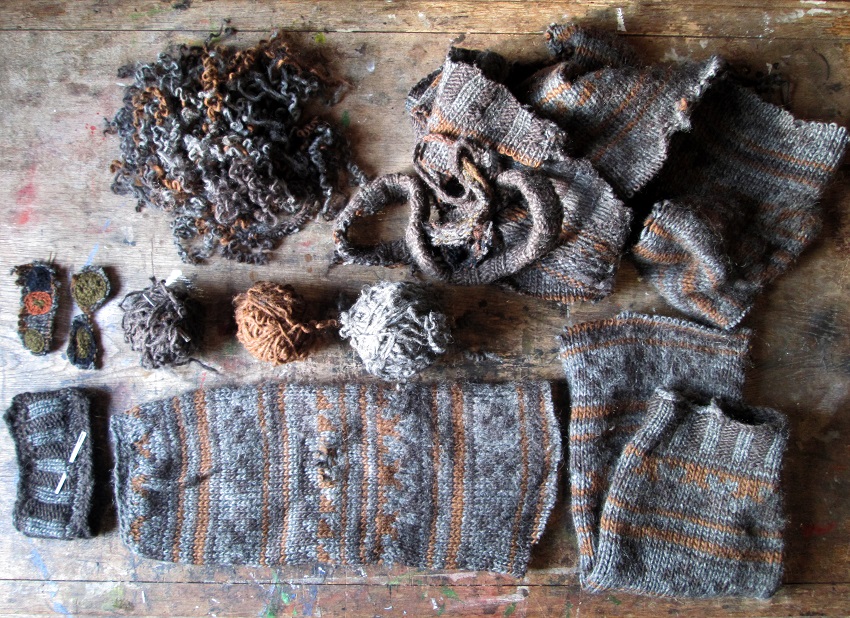
Image: Joanne’s Orkney jumper unravelling for Newfoundland exhibition / Image by the artist
In my search for info about the Orkney knitter, I was interviewed by BBC Radio Orkney reporter, Huw Williams. This resulted in many enthusiastic responses from listeners who knew or once worked for Camilla. Many suggested she moved to Edinburgh and then possibly to Africa. A new search found this: "... Mozambique: Camilla Eames has joined the Visual Arts School in Maputo as a Textiles Teacher...", but the links were broken. If you have any info, please do get in touch!
Using only the wool from the jumper while taking inspiration from its heather colours, I've started to transform the inside with strands of the stiffened wool (the texture is reminiscent of heather roots), to make it into a twiddle muff (a garment that provides comfort for the anxious and restless hands).
Inspired by colder climates, I've also added softer strands (thrummed) to make it a very thick for extra comfort. This also adds another connection to Newfoundland, the exhibition I made my garment for. Completely hidden, the outside of the muff gives no clues as to what's inside (I've been careful when adding strands to make sure no stitching shows on the outside).
As well as the muff, I'm delighted to be collaborating with one of the other exhibitors, Sarah Albu, singer/performer/vocal/explorer/spinner of wool and knitter from Montreal, Quebec. Conversations and ideas continue flow via email and zoom, as we inch towards firming up ideas for the exhibition.
What do you think the future of sustainable craft making will look like?
I think that it’s going to be varied with invention coming out of necessity - mending the old first before buying new. Learning to live and work alongside nature by looking to the past for some of the answers, embracing traditional techniques, adapting them, but also looking to new technology to create new work in a sustainable way.
I’m a member of the Scottish Basket Makers Circle and have been making more use of my field growing willow for basket making. I like that its working with the seasons, and any mistakes (there are many), can be burnt in our solid fuel cooker. I just need to keep the deer off them! We’ve been enjoying watching a family of three deer growing up, from a pregnant mother to her twins growing up. We don’t want to scare them away, so I’ve fenced off my favourite basket making willows, and left the rest to fend for themselves. There’s enough for everyone.
My dad recently refurbished a 200-year-old printmaking press that was rescued from a skip, and given to him a few years ago. It’s up and running, good as new and looks stunning. I’ve been enjoying getting inky and being able to develop further my love of drawing and thinking about possibilities for the future, printing on my own handmade papers.
This interview has been lightly edited for clarity.
![Craft Scotland Team Update]()
![Celebrate Craft and Shop Local This Festive Season: Makers Markets and Open Studios Not to Be Missed]()
![Statement Regarding Access for HARVEST: Contemporary Craft Fair]()
![Programme Update Spring 2025]()
![Hag: Reimagining Complexities of Womanhood, Ageing and Wisdom]()
![The Craft Edit February 2025]()
![Sarah Hutchison Gives Jewellery a Second Chance to Sparkle]()
![Òr: An Ode to Craft on the Isle of Skye]()
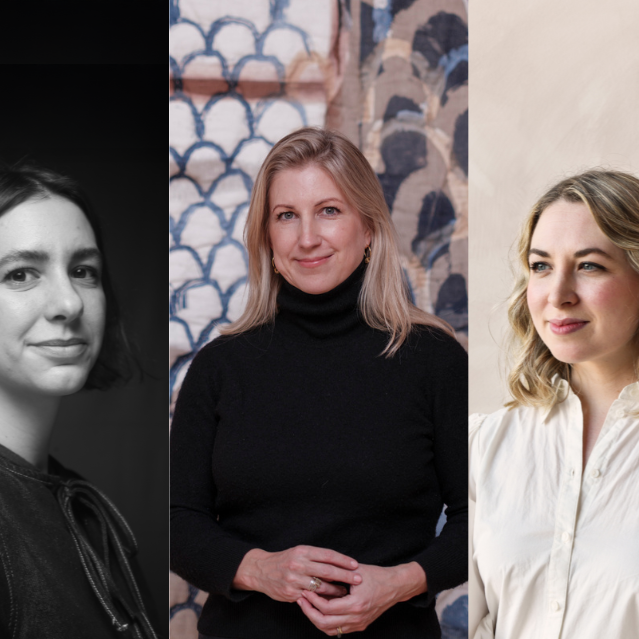

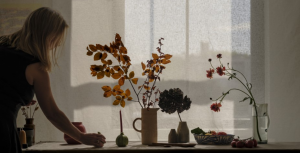
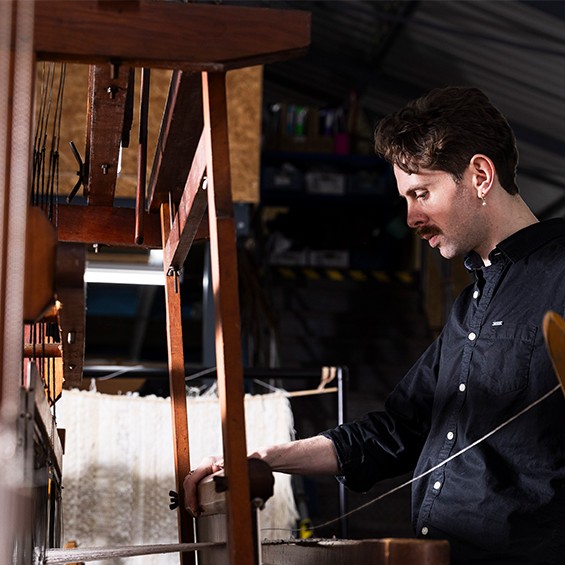
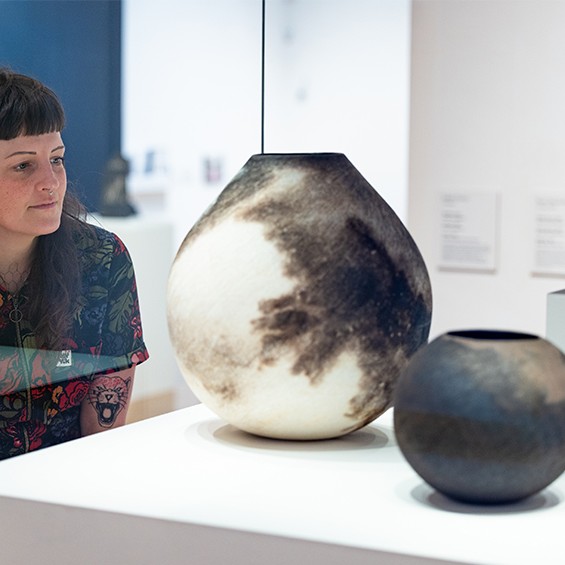
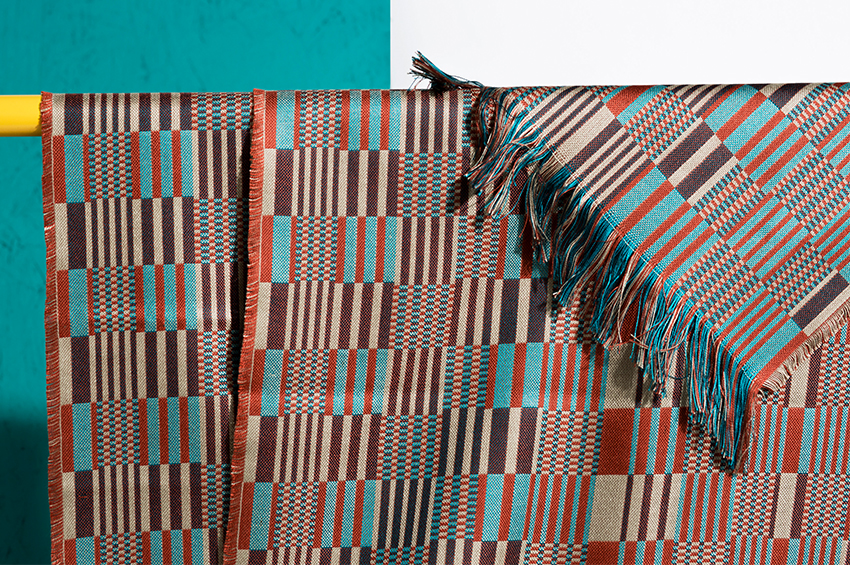
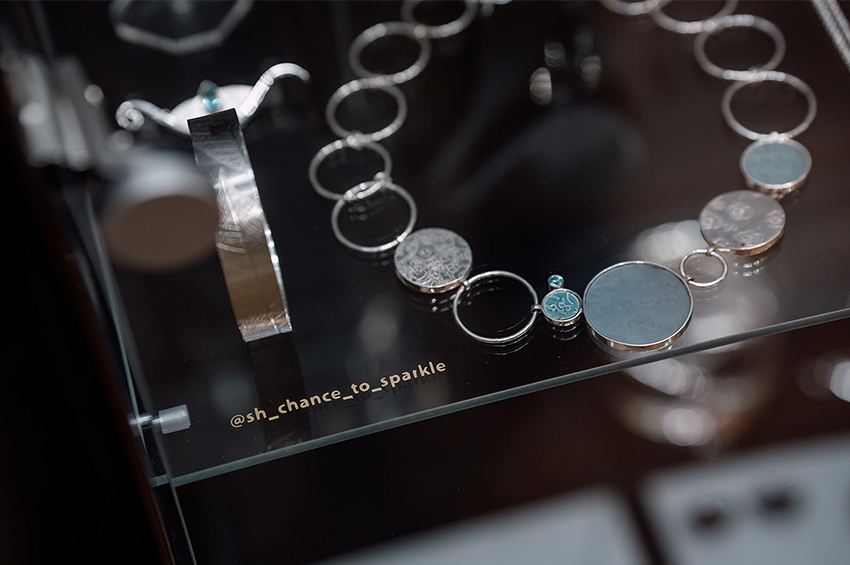
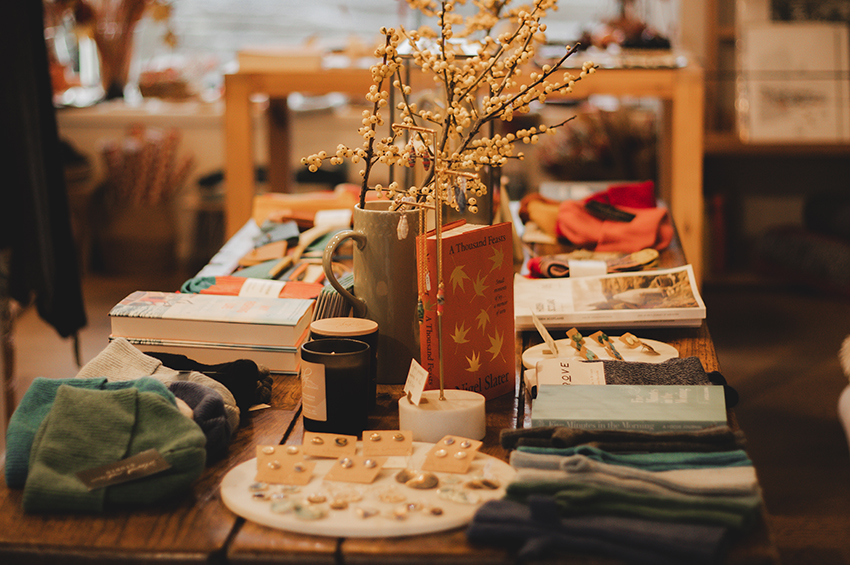
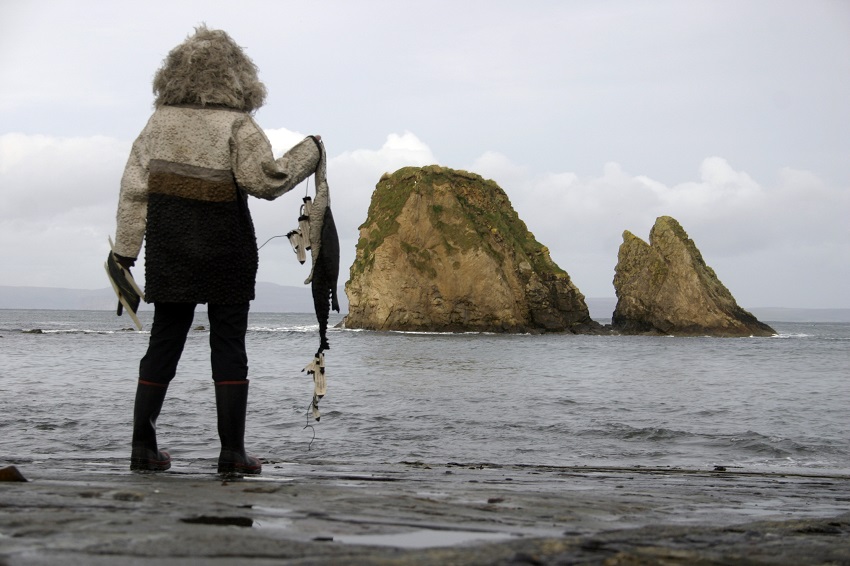
 Images: Joanne’s homegrown willow / Images by the artist
Images: Joanne’s homegrown willow / Images by the artist  Image: Joanne in front of her Angus MacPhee-repilca garment / Photography by Michael O'Donnell
Image: Joanne in front of her Angus MacPhee-repilca garment / Photography by Michael O'Donnell